Liquid Probiotics for Poultry: Enhancing Flock Health
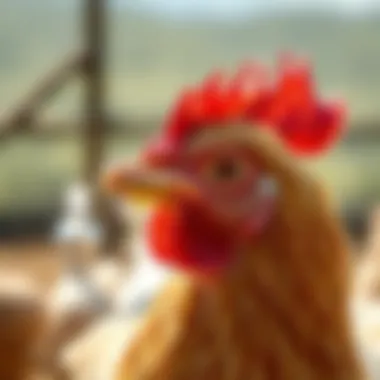
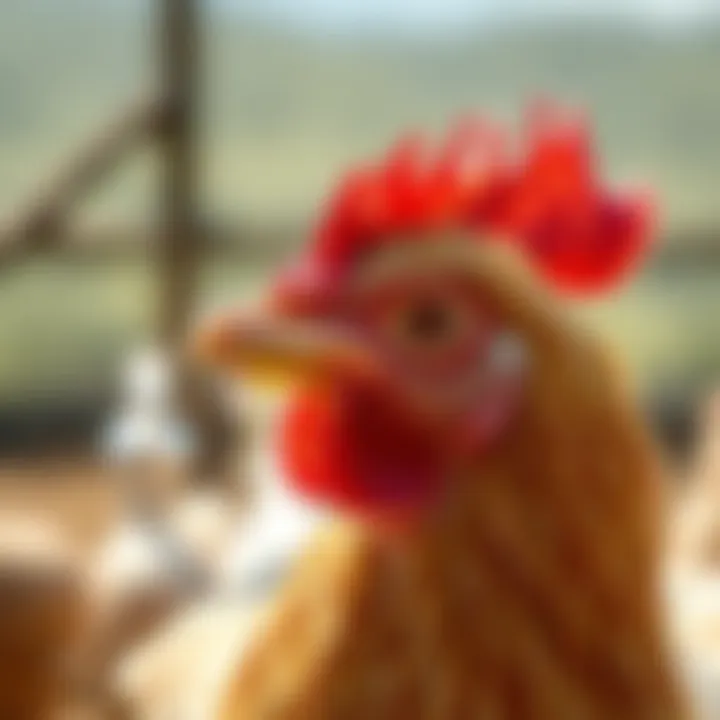
Intro
In recent years, the conversation around poultry health has taken a noteworthy turn. With an eye toward sustainable agriculture, liquid probiotics have gained traction as a vital component to support poultry production. As farmers and industry professionals strive for better growth, improved gut health, and resilient flocks, the significance of these microbial formulations becomes ever clearer.
Liquid probiotics promise a myriad of benefits for poultry nutrition and overall well-being. They are not just a modern trend, but rather a reflection of a greater shift toward understanding the intricate relationships between diet and animal health. This article will dig deep into what liquid probiotics are, how they work, the advantages they bring, and the complexities they introduce into poultry management.
Key Insights
Liquid probiotics are essentially live microorganisms designed to be added to poultry diets to promote health and growth. Unlike their powdered counterparts, liquids offer ease of incorporation into feed and drinking water. The mechanisms by which they exert their positive effects center around enhancing gut flora, competing against pathogens, and supporting immune function.
Overview of the Topic
The landscape of poultry farming is changing, with pressure mounting on producers to adopt practices that ensure sustainability. In this context, liquid probiotics emerge as a beacon of hope, fostering gut health which ultimately leads to better feed conversion efficiency and overall flock performance.
Importance in Agriculture
Agriculture, particularly poultry farming, stands at a crossroads. The industry is burdened by challenges such as antibiotic resistance, the quest for higher yields, and consumer demand for healthier food options. Liquid probiotics present a nourishing alternative that aligns well with both ethical and practical considerations. By integrating these microbial agents into poultry diets, farmers can respond to these pressing challenges more effectively.
The role of liquid probiotics in sustainable poultry production cannot be overstated. They pave the way for healthier, more resilient birds, while reducing the need for reliance on pharmaceuticals.
"Probiotics are not just about introducing good bacteria; they are about shaping an environment that supports the overall health of the flock."
As we proceed through this examination, we will explore the nuances of implementing liquid probiotics in poultry diets, the scientific foundations behind their efficacy, as well as the potential hurdles farmers might face. Ultimately, this article aims to provide agriculture enthusiasts with a deeper comprehension of this innovative and crucial nutritional strategy.
Foreword to Liquid Probiotics
The poultry industry has always sought ways to boost the health and productivity of flocks. In recent years, liquid probiotics have emerged as a noteworthy solution, capturing attention among farmers, researchers, and nutritionists alike. Liquid probiotics are more than just a trend—they represent a pivotal shift in understanding avian nutrition and gut health.
Liquid probiotics, as they pertain to poultry, are live microorganisms formulated to enhance the intestinal flora of birds. The significance of liquid over solid forms lies in their ease of administration and rapid absorption in the gastrointestinal system. With many poultry operations adopting more holistic approaches to animal care, integrating these probiotics is indeed proving to be a game-changer.
Defining Liquid Probiotics
At its core, a liquid probiotic for poultry includes a beneficial array of live bacteria and yeasts that support bird health. These organisms work synergistically to restore or maintain a balanced gut microbiota, crucial for nutrient absorption and immune system performance.
Unlike other feed additives that may mask symptoms or act as growth promoters, liquid probiotics focus on fostering a healthier internal environment. They are typically administered through water, making them convenient and effective for large-scale poultry operations. Their utilization not only serves to enhance digestion but also counters the adverse effects of pathogenic bacteria, promoting overall well-being.
Historical Context and Development
The idea of probiotics dates back several decades, but the focused application of liquid forms in poultry is more recent, tracing back only to the late 20th century. Many farmers traditionally relied on antibiotics to manage health challenges in their flocks. However, growing concerns over antibiotic resistance prompted a search for alternative options, paving the way for probiotics.
Research began to flourish, revealing potential benefits such as improved feed conversion rates and reduced mortality due to disease. The initial years saw slow adoption due to skepticism, yet with solid studies emerging, a gradual shift occurred. Farmers began incorporating these liquid formulations, often finding that they could help maintain flock health even in the face of chronic diseases.
As we venture into the details of liquid probiotics for poultry, it becomes clear that understanding their importance is crucial for anyone involved in poultry production. The rise of these beneficial microorganisms represents not just an innovative dietary shift but a holistic approach to animal wellness.
The Role of Probiotics in Avian Nutrition
The integration of probiotics into avian nutrition is a vital aspect of modern poultry management that should not be underestimated. Probiotics, or beneficial microorganisms, are essentially the good guys in the gut, working tirelessly to maintain a healthy digestive system for poultry. Given the pressure that modern farming practices exert on poultry health, understanding this role has become crucial. Not only do probiotics contribute to improved health, but they also help optimize growth performance and overall well-being for the flocks. Their application stretches beyond mere nutrition; probiotics embody a holistic approach to health management in poultry.
Gut Microbiota: The Intersection of Health and Nutrition
Gut microbiota refers to the community of microorganisms residing in the gastrointestinal tract of poultry. This diverse ecosystem is pivotal for nutrient digestion and absorption, as well as for the synthesis of essential vitamins. It turns out, the balance within this community can significantly influence the health and productivity of poultry.
Dysbiosis, or an imbalance in gut microbiota, can manifest due to stress, illness, or poor diet. This imbalance often leads to subpar nutrient absorption and can pave the way for disease. Here, probiotics step in to restore balance, thereby optimizing gut function. This means that healthy gut microbiota can translate into healthier, more productive birds. Understanding how to manage this complex relationship is essential for any poultry producer aiming to achieve peak performance in their flock.
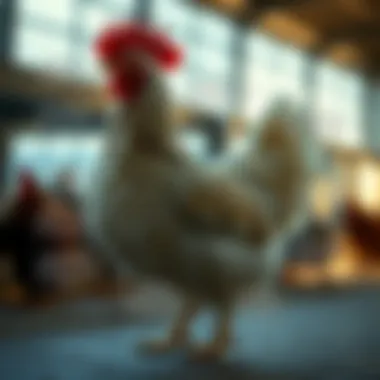
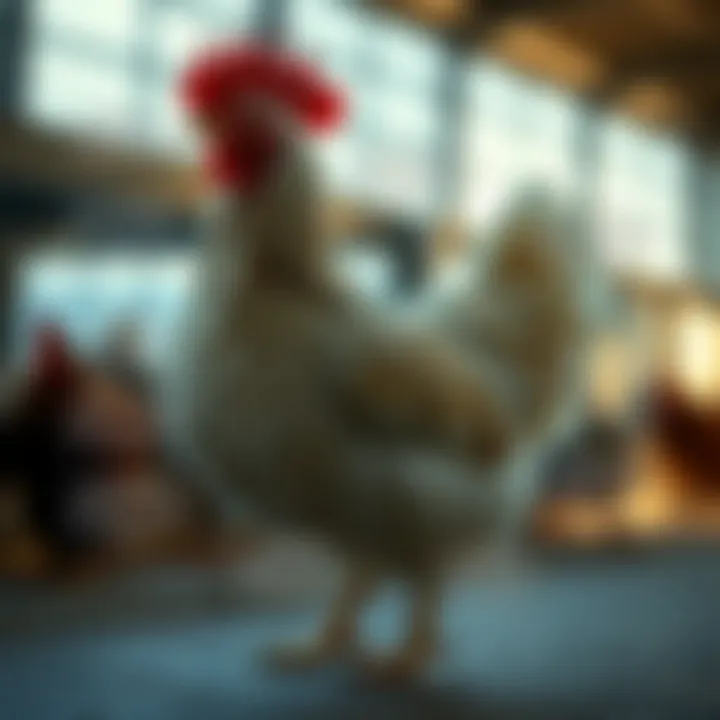
Mechanisms of Probiotic Action
Probiotics are not just passive players in poultry nutrition; they actively engage through various mechanisms that contribute to avian health. Below are some primary mechanisms through which probiotics exert their beneficial effects:
Competitive Exclusion
Competitive exclusion is a method through which probiotics maintain their advantages by outcompeting harmful pathogens for space and resources within the gut. When effective, this mechanism can significantly reduce the colonization of harmful bacteria. The unique characteristic here is that probiotics can create a barrier, effectively blocking pathogens from making themselves comfortable in a bird’s gut.
Why is this beneficial? It helps in preventing intestinal infections, which translates to fewer health issues and less reliance on antibiotics. With growing concerns about antibiotic resistance, competitive exclusion emerges as a preferred strategy in poultry management. However, the effectiveness of this method may vary depending on the strains of probiotics used, making strain selection a key consideration in maximizing its benefits.
Production of Antimicrobial Substances
The production of antimicrobial substances is another important mechanism through which probiotics promote avian health. Certain probiotic strains can produce substances that directly inhibit pathogenic bacteria. This characteristic is particularly important as it contributes not only to gut health but also to overall flock wellness.
Essentially, antimicrobial substances can deter the growth of harmful bacteria, enhancing the bird's ability to fend off infections. This makes it a popular choice among poultry farms looking for natural ways to reduce disease incidence. However, it's worth noting that not all probiotics produce these substances, so understanding which strains provide this feature is critical for effective application.
Enhancing Immune Response
Lastly, probiotics play an essential role in enhancing immune response. When gut health is supported, the immune system can work more effectively. Probiotics have shown potential in boosting the immune system's ability to respond to infections.
A robust immune response is a hallmark of resilience in poultry. Birds with enhanced immune systems are more likely to thrive under stress and maintain better health, leading to improved growth performance and lower mortality rates. This mechanism is especially vital in the context of raising poultry in varying environmental conditions, where stress is prevalent.
Overall, by enhancing immune response, probiotics serve not just as a nutritional supplement but as a cornerstone of sustainable poultry management.
Benefits of Liquid Probiotics for Poultry
The landscape of poultry farming has markedly shifted with a growing away from antibiotics toward more holistic approaches to animal health and nutrition. Liquid probiotics have emerged as a standout player in this transformation, promising to enhance flock vitality and productivity. Understanding the benefits can help poultry farmers make informed decisions that can boost their operations. This article delves into key aspects of liquid probiotics, outlining how they contribute to overall poultry health.
Improved Gut Health
At the core of avian health lies a complex digestive system, heavily influenced by gut microbiota. Liquid probiotics serve as a way to enhance the microbiome of poultry, creating an environment where beneficial bacteria can flourish while harmful pathogens are kept at bay. As a result, the overall gut health improves, leading to better nutrient absorption and a reduction in gastrointestinal diseases.
For instance, the introduction of specific strains of Lactobacillus can cultivate a more diverse gut flora, reducing the prevalence of harmful bacteria like Salmonella. This process not only supports the health of individual birds but also contributes to flock-wide immunity, proving that a healthy gut can directly impact overall wellbeing.
Enhanced Growth Performance
Probiotics are not only about preventing ailments; they play a significant role in growth metrics as well. Poultry receiving liquid probiotics often demonstrate better feed conversion ratios. This means that birds convert feed into body mass more efficiently, leading to quicker growth rates with less feed. These improvements are not merely anecdotal; various studies show that broiler chickens provided with liquid probiotics can grow significantly faster compared to those on standard diets.
Farmers should also note that probiotics do not act in isolation. When paired with a balanced diet, the effects are amplified. This synergy can lead to notable economics in feed costs, as better growth performance decreases the time needed to reach market weight.
Reduction in Disease Incidence
Birds are susceptible to a myriad of diseases, particularly when stressors such as overcrowding or environmental changes come into play. Liquid probiotics can bolster the birds' immune responses, making them more resilient to infections. For example, administering probiotics has been linked to decreased the incidence of enteritis and other intestinal disorders. The mechanism at work here involves the enhancement of the immune system’s ability to respond to pathogens effectively.
Moreover, using probiotics as a preventive measure can lead to lower mortality rates, preserving flock integrity and reducing the financial burden associated with disease management. The decreased requirement for antibiotics as a result of improved gut health both fosters sustainability and addresses public health concerns regarding antibiotic resistance.
Optimizing Feed Efficiency
Feed represents a significant cost in poultry farming, so maximizing feed efficiency is a top priority for farmers. Liquid probiotics can aid in breaking down complex feed components, making nutrients available for absorption. It's quite like having a well-oiled machine; when everything runs smoothly, you get the best output.
Implementing a probiotic regimen not only ensures that the birds get the most out of their feed but also helps in maintaining a consistent and healthy production cycle. Birds that experience improved gut function are less likely to experience digestive disruptions, dwindling feed intake, or weight loss. This represents a win-win situation for both poultry health and farm profitability.
In summary, the incorporation of liquid probiotics offers transformative benefits that can lead to healthier birds, better growth performance, and more efficient feed utilization. For poultry farmers looking to enhance their operations sustainably, liquid probiotics are indeed a step into the future of poultry health management.
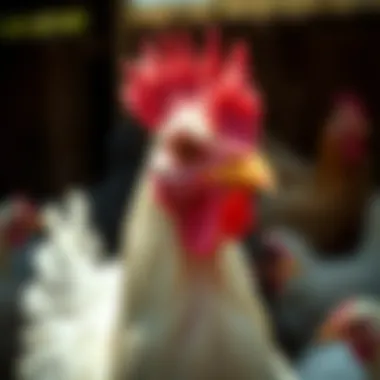
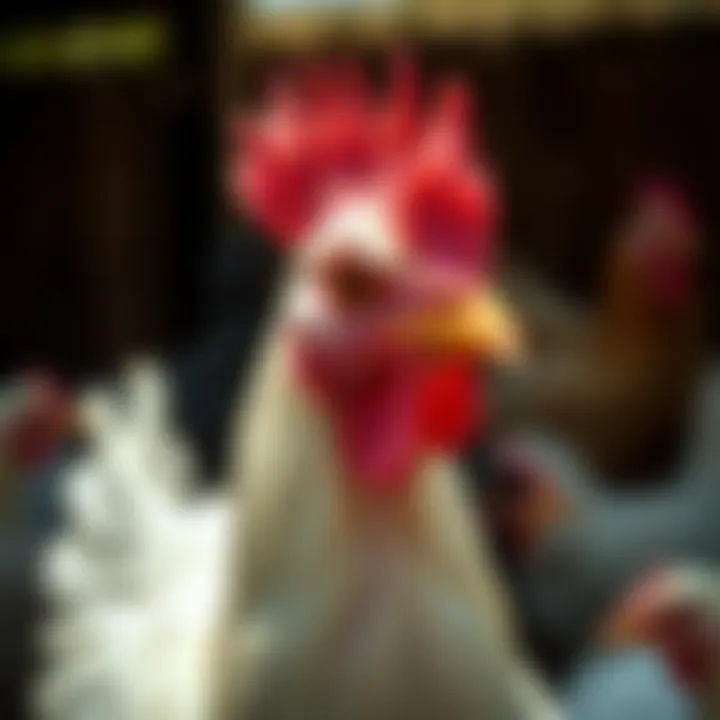
Challenges and Considerations
In the landscape of poultry nutrition, liquid probiotics offer a promising avenue to bolster the health and productivity of flocks. However, integrating these solutions isn't without its hurdles. Understanding the challenges and considerations associated with liquid probiotics is crucial for poultry farmers and enthusiasts aiming to merge these innovations into their farming practices effectively. Addressing quality control, strain selection, and the ever-evolving regulatory environment can make or break the success of these beneficial microorganisms in poultry management.
Quality Control Issues
Quality control remains a pivotal focus when implementing liquid probiotics into poultry diets. The efficacy of probiotics largely hinges on the quality of the product being used. One needs to ask: Are the probiotics viable at the time of administration? How do manufacturers ensure that a sufficient number of live microbes reach the gut of the birds? Without stringent quality control measures, there is a real risk of administering ineffective or even harmful products.
Here are some common quality control issues to consider:
- Verification of CFU Count: Each probiotic strain should come with a guarantee of colony-forming units (CFU) at the point of consumption.
- Storage Conditions: Improper storage can diminish the viability of probiotics. Manufacturers must provide clear guidelines on temperature and conditions for optimal preservation.
- Contamination Risks: The potential for contamination during production cannot be overlooked. Ensuring clean environments during formulation is essential for maintaining product integrity.
"Inconsistent quality can turn potential benefits into costly setbacks for poultry operations."
Strain Selection for Specific Applications
The selection of appropriate probiotic strains tailored to specific poultry applications is another critical consideration. Not all probiotics are created equal. Each strain possesses unique characteristics that dictate its functionality and effectiveness in poultry. Choosing the right strains can lead to enhanced gut health and optimization of growth performance.
Factors influencing strain selection include:
- Targeted Benefits: Different strains could yield different outcomes. For instance, some may reduce pathogenic bacteria while others improve nutrient absorption.
- Species Specificity: Probiotics effective in one species may not have the same impacts on another. Farmers should use strains verified for their specific poultry breed or age group.
- Adaptability in Diet: The choice of strains should also consider the dietary composition. Certain strains might perform better in high-starch diets, while others excel in protein-rich environments.
Regulatory Framework and Compliance
Navigating the regulatory framework surrounding liquid probiotics can be daunting. Different countries have varying requirements regarding the approval and labeling of probiotics for animal feed. Ensuring compliance is of utmost importance both for legal operation and for the welfare of the birds.
Key points to consider include:
- Registration Requirements: Probiotics often need to be registered with food safety authorities before they can be marketed. Understanding local regulations is essential.
- Labeling and Claims: Claims made about probiotics' efficacy must be substantiated. Farmers need to understand what the product can legitimately claim in terms of benefits.
- Monitoring and Reporting: Continuous monitoring may be required for marketed products. This includes reporting any adverse effects to comply with regulations and ensure consumer trust.
Practical Application of Liquid Probiotics
The significance of integrating liquid probiotics into poultry management cannot be overstated. Implementing these microorganisms into the diet of poultry promotes better health and optimizes growth outcomes. The proper application of liquid probiotics is a game-changer in overcoming some of the persistent challenges in poultry farming, including disease management and feed conversion efficiencies.
The advantages of using liquid probiotics extend beyond basic gut health. They encompass a variety of aspects such as improved nutrient absorption and enhanced immune responses, which together contribute to the overall productivity of the flock. Moreover, these applications support sustainable practices by potentially decreasing reliance on antibiotics, aligning with the increasing demand for cleaner and more responsible animal farming protocols.
Integrating Probiotics into Poultry Diets
When it comes to incorporating probiotics into poultry diets, a comprehensive understanding of the species and strains suitable for different poultry types is crucial. Not every probiotic will yield the desired results; specific strains have unique effects based on their composition and the target species.
- Formulations: Liquid probiotics can easily be mixed into drinking water or incorporated into feed. This method ensures that birds ingest the recommended doses consistently, enhancing their gut flora effectively.
- Timing and Age: The age of poultry also plays a key role in integration. For instance, younger chicks may benefit from early exposure to probiotics to establish a healthy gut microbiota before reaching stressful points in their growth, such as vaccination periods.
- Prevailing Conditions: Environmental factors like temperature, humidity, and overall farm hygiene need consideration as they can affect probiotic viability and efficacy. For optimal results, consider using probiotics during stressful periods such as transportation or during health outbreaks.
This thoughtful integration of probiotics not only cultivates a healthier gut environment but also enhances overall flock resilience.
Dosage and Administration Recommendations
Administering the right amount of liquid probiotics is essential for maximizing their potential benefits. Here are some recommendations to follow:
- Dosage Information: While specific dosing can vary based on the product and intended purpose, a common recommendation might involve 1-2 mL of liquid probiotic per liter of drinking water. Farmers should always refer to the manufacturer's guidelines for precise dosages.
- Frequency: Depending on the health status and specific needs of the flock, probiotics may be administered daily or on a less frequent basis. During critical times, like post-antibiotic treatment, increasing the frequency may be beneficial.
- Monitoring Effects: It’s important to monitor the poultry's response to the probiotics, noting any changes in growth performance, health, or behavior. Keeping track of these changes can help adjust dosages or methods of administration accordingly.
"By adopting a meticulous approach to the integration and administration of liquid probiotics, farmers can substantially uplift their flock's health and performance, paving the way for a more successful poultry operation.”
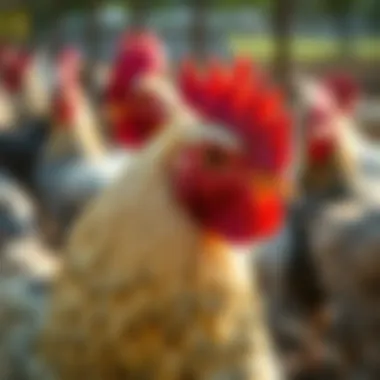
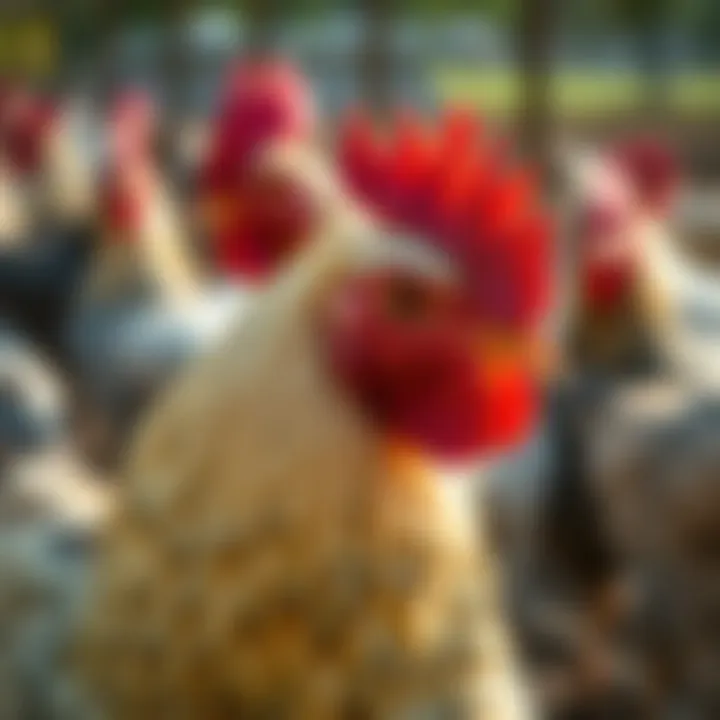
Recent Research and Innovations
The emerging field of liquid probiotics for poultry is characterized by rapid developments and an ever-growing body of research. Understanding the latest advancements is essential for both practitioners in the poultry sector and those engaged in academic inquiry. This section sheds light on the significant findings in the realm of liquid probiotics, evaluating their implications and practical applications.
Current Studies on Efficacy
Recent studies have focused on the effectiveness of liquid probiotics in various poultry health aspects. Research indicates that certain strains of probiotics can significantly enhance gut microbiota stability and functionality. For example, a study published in the Journal of Applied Poultry Research highlighted the role of Bacillus subtilis in improving feed conversion ratios in broiler chickens. The results were promising, establishing that birds supplemented with this probiotic showed a marked improvement in growth rates alongside reduced mortality rates due to intestinal pathogens.
The Poultry Science journal also unveiled findings on Lactobacillus species, which have demonstrated considerable efficacy in enhancing immune response. Specific trials have indicated that these probiotics can decrease the detrimental effects of E. coli infections in young chicks, showing a vital connection between gut health and overall poultry resilience.
Recent studies emphasize that the careful selection of probiotic strains is crucial, as not all probiotics deliver the same benefits across different poultry breeds and production systems.
Maintaining a focus on specific poultry operations is vital. For instance, layer hens can benefit from a mix of probiotics to improve egg production quality and consistency, while broiler chickens may require different formulations aimed primarily at growth performance.
Emerging Trends in Probiotic Development
The landscape of probiotic development is continually evolving. One of the most intriguing trends is the move towards multi-species probiotic formulations. Rather than using single strains, researchers are exploring combinations that can target various health aspects simultaneously. This strategy aims to create a more comprehensive approach to poultry health, addressing gut health, immune support, and nutrient absorption all in one go.
Additionally, advances in biotechnology are paving the way for genetically modified probiotics that can withstand the harsh conditions of the poultry gastrointestinal tract. A recent study highlighted by Biotechnology for Biofuels pointed out genetically enhanced Lactobacillus strains that can survive high bile salt concentrations and acidic environments, increasing their likelihood of colonization and effectiveness in the gut.
Furthermore, as sustainability grows more critical in agricultural practices, probiotics are being investigated not just for animal health but also for their potential role in reducing the environmental impact of poultry farming. Studies are exploring how probiotics can decrease ammonia emissions from poultry litter, thereby contributing to more sustainable farming practices.
In summary, the research landscape on liquid probiotics for poultry is dynamic and promising. With ongoing studies focusing on both efficacy and innovation, the future appears bright for integrating these biological agents into poultry production strategies.
Future Perspectives on Liquid Probiotics in Poultry
Liquid probiotics present an intriguing avenue for reforming traditional approaches in poultry management. As global populations demand more protein-rich food sources, poultry farmers are increasingly looking towards innovative and sustainable methods of production. This section focuses on how liquid probiotics hold potential not only for enhancing the health of individual birds but also for contributing to the broader health of poultry populations worldwide. The prospects for these beneficial microorganisms extend beyond health enhancements. They also encompass improved growth performance and overall animal welfare.
Potential for Global Poultry Health Improvement
The rise in poultry production must be supported by advancements in animal health. Utilizing liquid probiotics can fundamentally alter how we approach disease resistance in flocks. One key possibility lies in the ability of these probiotics to bolster the immune systems of poultry. This is particularly crucial in regions where traditional antibiotic use is being curtailed due to increasing resistance issues.
Some notable advantages include:
- Disease Prevention: Probiotic strains such as Lactobacillus can outcompete harmful pathogens in the gut, reducing the likelihood of infections.
- Stress Resilience: Probiotics can help birds cope with stressors such as transportation and environmental changes, essential for maintaining productivity.
- Flock Uniformity: A healthier gut microbiota can lead to more consistent growth rates across flock members, resulting in better market readiness and profitability.
"The role of probiotics in poultry health is not just beneficial; it can be transformative for how we manage our flocks in the face of increasing global demands."
Integration with Other Sustainable Farming Practices
For liquid probiotics to reach their full potential, they need to be integrated skillfully with other sustainable farming methods. This synergistic approach can lead to significant reductions in environmental impact while simultaneously improving flock health. Here are a few critical considerations for such integration:
- Rotational Grazing: Incorporating probiotics into feed during rotations can enhance pasture health and increase nutrient uptake for the birds.
- Organic Fertilization: Using probiotic solutions in soil management can aid in nutrient cycling and improve soil health, promoting better crop yields that can serve as feed.
- Holistic Farming Approaches: Combining probiotics with other natural healing methods can create a comprehensive health management system, leading to more resilient animal agriculture.
As we look ahead, the integration of liquid probiotics into poultry farming will likely become a pivotal aspect of sustainable agricultural practices, offering not just health benefits for birds but also broader environmental advantages. The symbiosis between these probiotics and sustainable systems holds the promise of creating a future where poultry farming meets the needs of the present without compromising those of future generations.
Closure
As we draw this comprehensive examination to a close, it's essential to emphasize the significance of liquid probiotics in poultry farming. The adoption of probiotics, particularly in liquid form, is not merely a trend but a substantial advancement in the field of avian nutrition. These beneficial microorganisms play a pivotal role in promoting gut health and improving overall flock well-being. They offer a natural solution to combat diseases, enhance growth rates, and optimize feed efficiency, which are all critical to successful poultry management.
Summarizing the Importance of Probiotics
To encapsulate the importance of probiotics, one must consider their multifaceted contributions to poultry farming. Liquid probiotics aid in balancing the gut microbiota, providing chickens with a robust defense system against pathogens. They also foster a healthier digestive process, which can lead to increased nutrient absorption. Furthermore, they can potentially reduce the need for antibiotics, thus minimizing the risk of antibiotic resistance—a growing concern in the agricultural sector. In essence, probiotics represent a shift towards a more sustainable approach in poultry nutrition, supporting the health of both the birds and the ecosystem at large.
Call for Continued Research and Adoption
Looking ahead, it’s crucial to underscore the need for ongoing research and wider adoption of liquid probiotics in the poultry industry. While existing studies highlight the positive impacts of these supplements, much remains to be explored. Variability in strains, dosage, and methods of administration can influence outcomes significantly. By investing in further research, we can unlock the full potential of liquid probiotics, tailoring applications to specific poultry health concerns.
The agriculture community must champion the integration of probiotics into standard practices while ensuring compliance with regulatory standards. As poultry farmers and enthusiasts embrace this innovative approach, they not only contribute to their operational sustainability but also to the broader aim of enhancing global poultry health. The path forward is clear; it demands collaboration among professionals, researchers, and policymakers to fuel the next era of poultry nutrition, one grounded in science and practicality.







